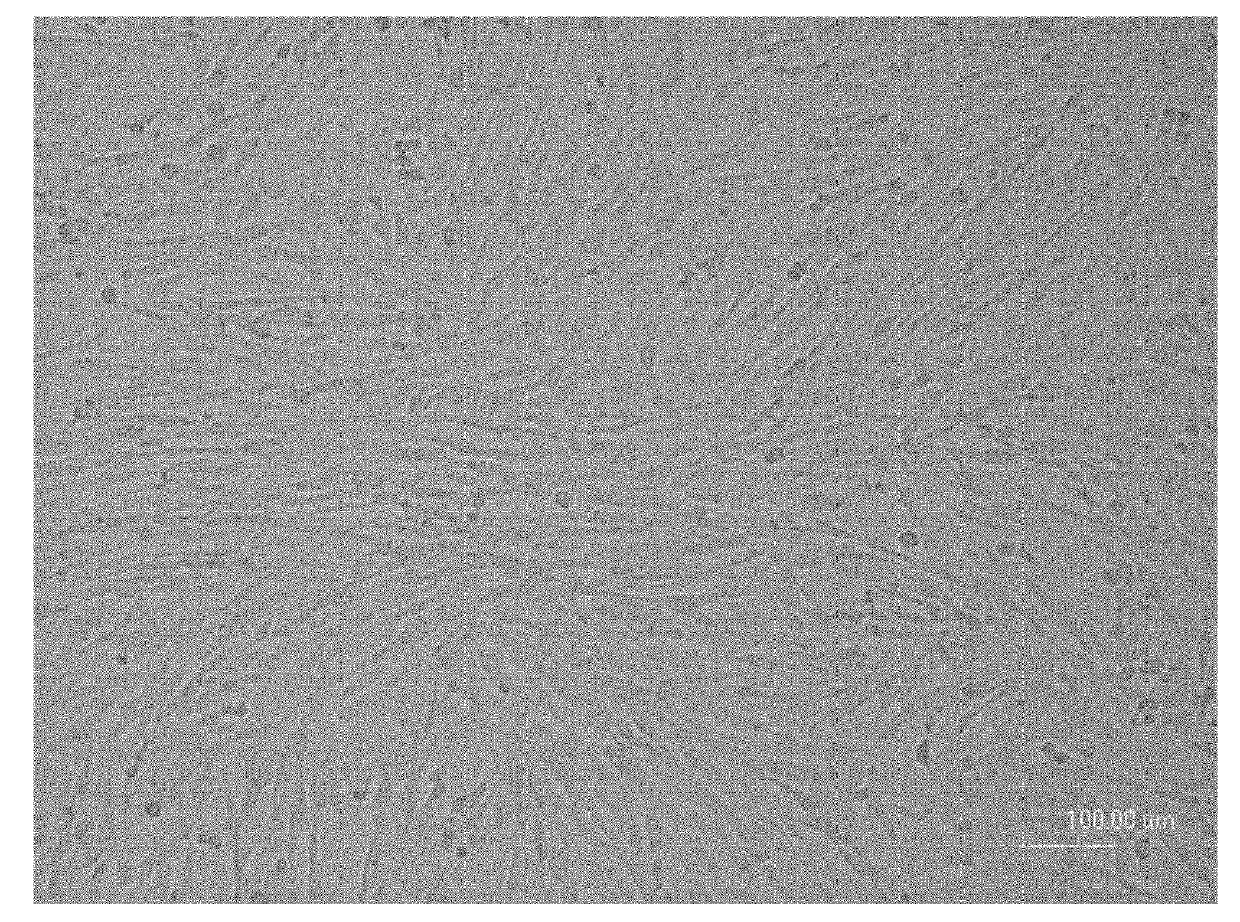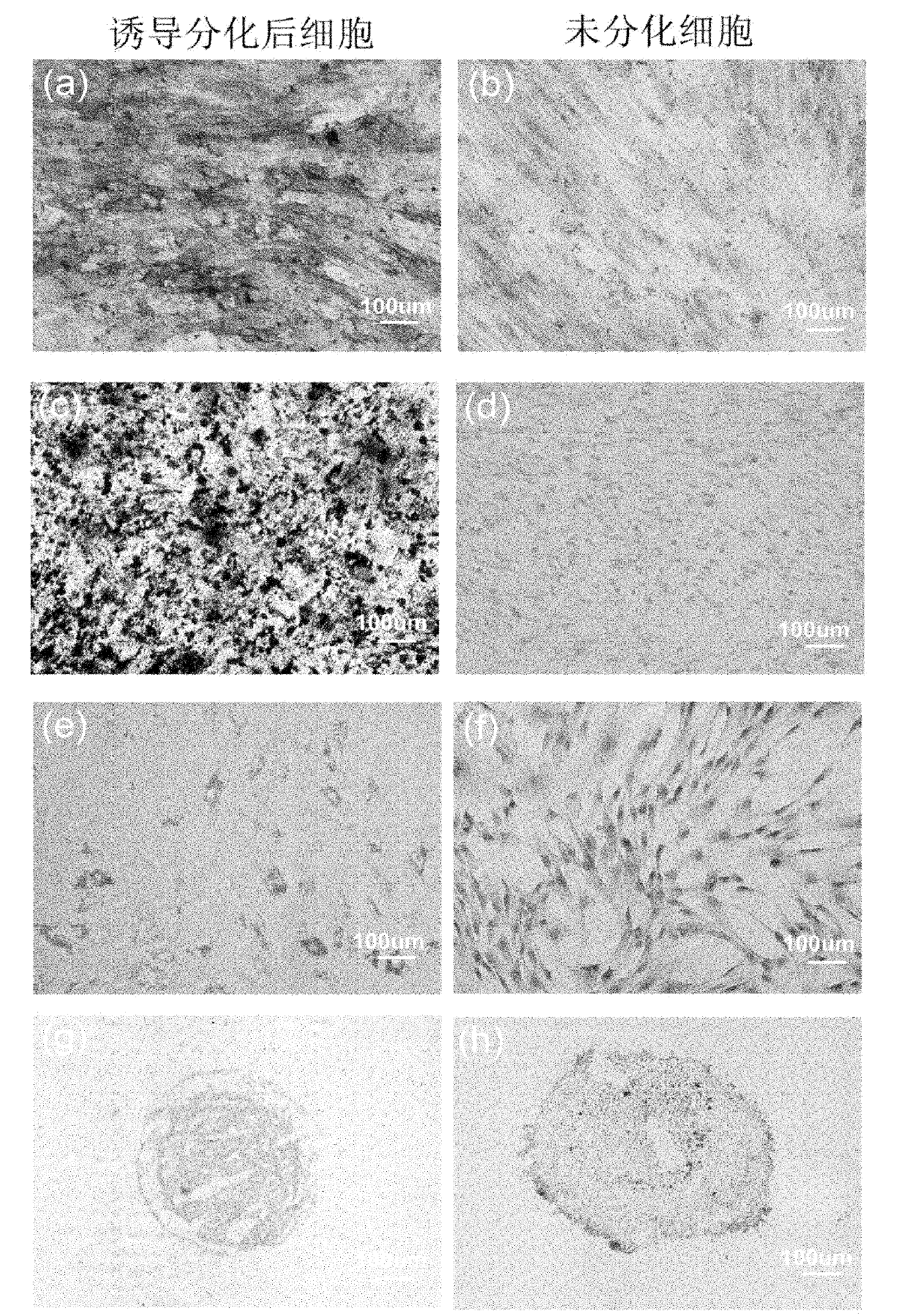Method for inducing human umbilical cord mesenchymal stem cells in vitro into liver cells and application thereof
A technology of mesenchymal stem cells and human umbilical cords, applied in the direction of artificial cell constructs, animal cells, vertebrate cells, etc., can solve the problems of complicated induction methods, and achieve good induction and differentiation effects, good differentiation effects, and short duration effects
- Summary
- Abstract
- Description
- Claims
- Application Information
AI Technical Summary
Problems solved by technology
Method used
Image
Examples
Embodiment 1
[0035] Example 1: Isolation, culture and identification of human umbilical cord mesenchymal stem cells
[0036] (1) Isolation and culture of human umbilical cord mesenchymal stem cells. Obtain human umbilical cord under aseptic conditions (aseptically obtained from the First Affiliated Hospital of Shantou University, the umbilical cords in this experiment were all from healthy pregnant women, with the consent of volunteers and family members), and the cells were separated within 6 hours. After immersing the human umbilical cord with 0.25% iodophor by volume for 3 minutes, wash away the blood clots on the surface and in the blood vessels with normal saline (try to completely remove the blood clots to reduce blood cell contamination), use surgical forceps to tear the umbilical cord, find two arteries and one Root vein, use tweezers to pick the Walton gel (also called umbilical cord matrix) around the blood vessel, and cut into 1~2mm 3 The size of the tissue pieces, and evenly added...
Embodiment 2
[0053] Example 2: Inducing human umbilical cord mesenchymal stem cells to differentiate into hepatocytes in vitro
[0054] The purpose of this example is to promote the differentiation of human umbilical cord mesenchymal stem cells into liver-like cells by culturing the induction medium added with inducing factors. Take the human umbilical cord mesenchymal stem cells from the 3rd to 8th generation, and use 1×10 5 The cell density of cells / well is seeded in 6 wells or 1×10 4 The cell density of the cells / well is seeded in a 24-well culture plate. When the cell density reaches 70%, the normal growth medium is discarded and replaced with a hepatocyte differentiation medium to induce differentiation to obtain hepatocytes. Hepatocyte differentiation medium is IMDM culture medium containing: 1% fetal bovine serum, 100U / ml penicillin, 100ug / ml streptomycin, 1μg / ml amphotericin, HGF (PeproTech) 40ng / ml, FGF-4 ( PeproTech) 10ng / ml, OSM (Sigma-Aldrich) 20ng / ml, bFGF (PeproTech) 10ng / ml, EG...
Embodiment 3
[0055] Example 3: Identification of differentiated cells
[0056] (1) Immunofluorescence to detect the expression of hepatocyte specific protein
[0057] According to the method in Example 2, human umbilical cord mesenchymal stem cells were cultured in the induction differentiation medium for 21 days, digested with 0.25% trypsin, and resuspended in the induction differentiation medium, and then the cells were resuspended in 1×10 4 Cells / cm 2 Inoculate in a 24-well culture plate at 37°C, 5% CO 2 Cultivate overnight in an incubator. Undifferentiated human umbilical cord mesenchymal stem cells cultured in normal growth medium were used as a negative control. Immunocytochemistry was used to detect hepatocyte-specific proteins: α-fetoprotein (AFP), albumin (ALB) and cytokeratin 18 (CK-18). After cell fixation, mouse anti-human monoclonal antibody α-fetoprotein (AFP), albumin (ALB) and cytokeratin 18 (CK-18) were added dropwise and incubated at 37°C for 1 hour, and then FITC or PE-label...
PUM
 Login to View More
Login to View More Abstract
Description
Claims
Application Information
 Login to View More
Login to View More - R&D
- Intellectual Property
- Life Sciences
- Materials
- Tech Scout
- Unparalleled Data Quality
- Higher Quality Content
- 60% Fewer Hallucinations
Browse by: Latest US Patents, China's latest patents, Technical Efficacy Thesaurus, Application Domain, Technology Topic, Popular Technical Reports.
© 2025 PatSnap. All rights reserved.Legal|Privacy policy|Modern Slavery Act Transparency Statement|Sitemap|About US| Contact US: help@patsnap.com



